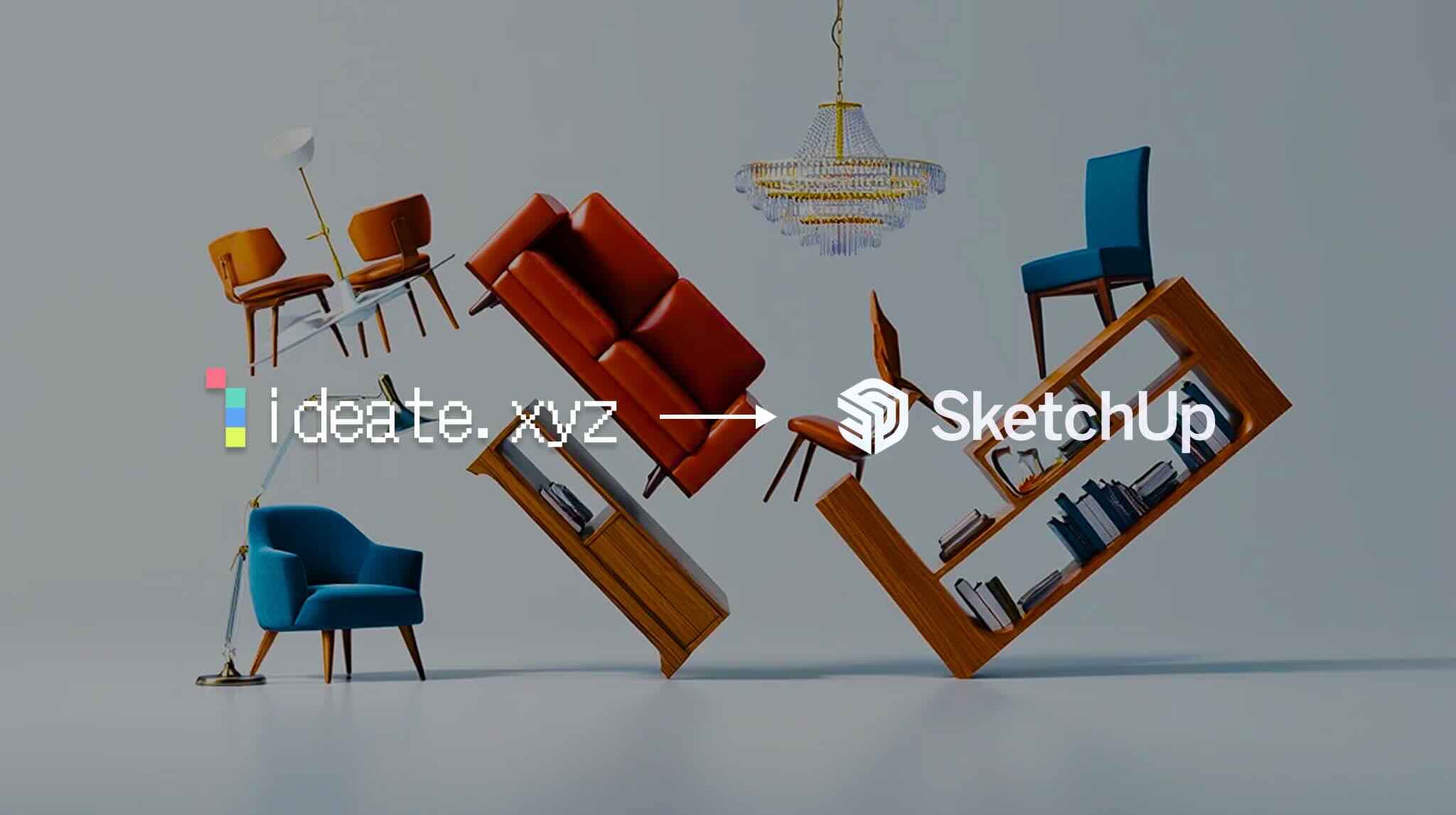Sketchup AI 3D Model Generation for Architecture and Interior Design

SketchUp has long been a powerful tool for architects and interior designers, but one persistent challenge remains: creating unique, custom assets efficiently. While SketchUp's asset library is extensive, using the same stock models as everyone else can make your designs feel generic. Today, we're exploring how combining SketchUp with AI-generated 3D models can revolutionize your workflow, allowing you to create standout scenes with custom assets in a fraction of the time.
The Limitations of Standard SketchUp Assets
SketchUp's 3D Warehouse and various extension marketplaces offer thousands of pre-made models. However, relying solely on these resources comes with significant drawbacks that can impact both your design process and final presentations.
Limited Uniqueness
When everyone uses the same asset libraries, designs begin to look similar across different projects and studios. For architects and designers trying to stand out to clients or in competitions, this sameness can be a real disadvantage. Custom modeling is the traditional solution, but the time investment is often prohibitive when working on tight deadlines.
Time vs. Quality Tradeoff
Creating custom 3D assets traditionally requires significant 3D modeling expertise and time—often hours or days per asset. This creates a difficult tradeoff: use generic assets and work quickly, or create custom assets but blow your project timeline. For most commercial projects, the deadline wins, and uniqueness suffers.
Style Consistency Challenges
Finding assets that match your specific design style can be frustrating. Mid-century furniture for one room, contemporary for another, and traditional for a third means hunting through different collections, leading to visual inconsistency or settling for "close enough" options that don't fully realize your vision.
The AI-Generated 3D Model Revolution
AI-powered 3D model generation has made remarkable progress in recent years. Tools like Ideate now make it possible to generate custom 3D assets from text descriptions or reference images in minutes rather than hours or days. This technological advancement is particularly valuable for SketchUp users.
From Images to 3D Models
The ability to convert reference images into 3D models opens up entirely new possibilities for designers. Found an inspiring furniture piece in a magazine or online? Have a photo of a custom light fixture you'd like to include? Now you can quickly transform these 2D references into 3D models ready for your SketchUp scene.
This image-to-3D workflow is particularly powerful because it allows you to maintain a consistent design language throughout your project, even when sourcing inspirations from diverse places.
Custom Assets in Minutes
With AI-powered generation, you can create custom furniture, fixtures, decorative elements, and architectural details that perfectly match your design intent without the traditional modeling time investment. This means you can now include those unique touches that make a design truly stand out, even on projects with tight deadlines and budgets.
Simplified Iterations
One of the most powerful aspects of AI-generated models is the ability to quickly iterate. Not happy with a particular detail? Need to adjust proportions or styling? Rather than spending hours tweaking mesh geometry in traditional modeling software, you can often regenerate with refined prompts or use tools like Ideate to adjust textures and details with minimal effort.
Practical Workflow: Image to 3D to SketchUp
Let's walk through a practical workflow that combines Ideate's image-to-3D capabilities with SketchUp to create unique, custom-designed spaces efficiently.
Step 1: Collect or Generate Reference Images
Either gather reference images for the custom elements you want to include in your design, or use Ideate to generate concept images. For reference images, look for:
- Furniture pieces from design magazines or websites
- Custom architectural elements like unique railings or moldings
- Decorative items that match your design theme
- Lighting fixtures with specific aesthetic qualities
If you don't have specific reference images, Ideate's image generation capabilities let you create concept images based on text descriptions. Simply describe what you envision, generate the image, and then proceed to 3D generation.
The key is creating or selecting references that align with your overall design vision while offering unique elements that wouldn't be found in standard asset libraries.
Step 2: Generate 3D Models with Ideate
Upload your reference images to Ideate and use the image-to-3D generation feature:
- Upload your reference image to Ideate
- Enhance the generation by adding descriptive text if needed (e.g. "Mid-century modern armchair with wooden arms and blue upholstery")
- Generate the 3D model
- Review the result and regenerate if necessary with adjusted prompts
- Use Ideate's texture refinement tools to enhance material details if needed
Step 3: Export and Import to SketchUp
Once you're satisfied with your 3D model:
- Export your 3D model from Ideate in GLB format
- Import the GLB file directly into SketchUp
- Position and scale your custom asset within your SketchUp scene
- Repeat the process for additional custom elements
The result is a SketchUp scene populated with truly unique assets that set your design apart while maintaining the workflow efficiency that SketchUp is known for.
Ready to Transform Your Architectural Visualizations?
Start creating unique, custom assets for your SketchUp projects with Ideate today. Stand out from the crowd with designs that are truly your own.
Start for FreeRelated Articles
Best Practices for Image to 3D: Optimizing Inputs for AI 3D Model Generators
Learn how to create high-quality input images for AI 3D model generators like Meshy, Tripo, Rodin, Trellis, and Hunyuan to achieve the best results.
Read More →Explore More AI 3D Workflows
Discover more ways to leverage AI-powered 3D generation in your design workflow. From texture refinement to model creation, we're constantly adding new resources.
Browse All Articles →